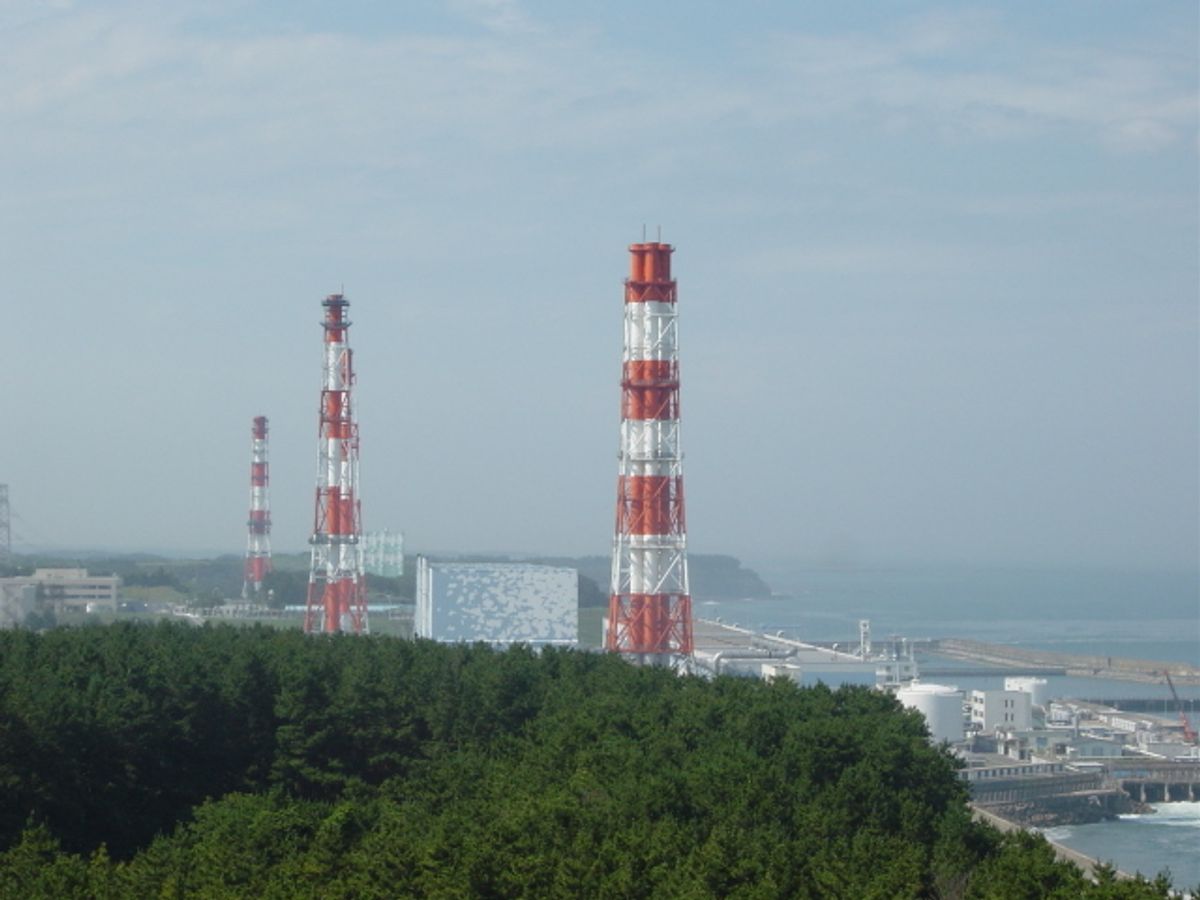UPDATE 3/16: For the latest news, read Timeline: The Japanese Nuclear Emergency.
Editor's Note: Post updated 17 March 2011. This is part of our ongoing news coverage of Japan's earthquake and nuclear emergency.
With news that a third reactor at Japan's Fukushima Daiichi nuclear power plant exploded early Tuesday morning--the aftermath of Friday's quake and tsunami--experts continue to debate the possible outcomes of a core meltdown and leak of radioactive materials from any of the three reactors. In a larger discussion regarding the disaster among representatives from the watchdog group, the Union of Concerned Scientists, experts questioned whether spent fuel, stored on-site in the Japanese plants, might also pose a threat. Though hard to determine the danger in Japan as the disaster is ongoing, the discussion pointed to vulnerabilities in that country's and the United States' plants.
In Mark-I reactors, such as the Fukushima Daiichi plant's, spent fuel is located in cooling pools in the reactor's "attic," explains David Lochbaum, director of the Union of Concerned Scientists' nuclear safety program. For exploding units, which have blown off their roofs and walls, the problem is clear: "If there's any radiation released, it's got to get to the environment." He compares that scenario with radiation released from fuel in the core, protected by the containment building which "would reduce the amount of radioactivity that reaches the public."
Chaim Braun, a consulting professor at Stanford's Center for International Security and Cooperation, notes that though the spent fuel pools are in fact exposed in the tops of the reactor buildings which no longer have roofs, the key is the water level in these pools. The pools must continuously have water pumped into them and If the water level goes down, he says, "the gamma radiation from the fission products contained in the fuel is not attenuated by the water cover and might escape into the atmosphere." He notes that these pools usually need about five meters of water level above the spent fuel to block the radiation from reaching the atmosphere.
"If the water level in the pool recedes down to the point where the spent fuel assemblies are partially exposed," Braun adds, "then partial melting of the spent fuel might occur thus releasing some of the fission products from the spent fuel into the external environment."
Because the spent fuel's radiation heats the water surrounding it, constant circulation of that water is also required. Tokyo Electric Power Company continues to monitor the temperatures in these spent fuel pools, especially given Tuesday's and Wednesday's fires in the reactor No. 4 building. The International Atomic Agency has published these rising temperatures in the pools of reactors 4, 5, and 6 (see update from 16 March 22:00 UTC).
Fortunately, the total amount of spent fuel on-site in the Japanese plants is relatively small explains, Edwin Lyman, a physicist in the UCS Global Security Program. Before Friday's disasters, Japan had routinely transported some of the spent fuel to other parts of the country and other countries entirely, such as the United Kingdom and France, for processing. "The good news, if there is any, is that, from the numbers I've seen, the inventory of spent fuel in these pools was relatively small and they were well below capacity," Lyman says.
Describing hypotheticals, Lochbaum explains that if there was widespread release of spent fuel [radiation], the casualties for a worst case scenario might be similar to the worst case scenario for leakage from the core. The difference, he explains, is that the core would release a lot of short-lived radioisotopes, causing more fatalities in the first year, while a spent fuel accident might mean that primary casualties would come from cancer "down the road."
Ellen Vancko the UCS Nuclear Energy and Climate Change Project Manager expects that an early influence of this tragedy on the United States' nuclear policy will be for officials to take a harder look at operating U.S. plants. "It would be naive to think that the events in Japan will have no impact on the nuclear industry in this country," she says.
Lochbaum notes that the United States, which has 23 plants of the Mark-1 design, hasn't been nearly as fastidious with its spent fuel supply as Japan. He points out that the UCS has advocated for programs that would force plant operators to transfer spent fuel from pools inside the plants into dry casts stored on-site. He also believes other designs such as Mark-3 reactors, which store their spent fuel pools at ground level, might be less vulnerable. "If something were to happen and one of our pools released radioactive contents into the air, there'd be a lot of people in harm's way," Lochbaum says, "and it [would be] shame on us for allowing that to happen."
Images: Wikimedia / Theanphibian / Nuclear Energy Institute; Top: TEPCO/Nuclear Energy Institute






